Capital of Italy’s famous Tuscany region and home to masterpieces of art and architecture, Florence is a must-visit spot on everyone’s itinerary for your first time in Italy. Once upon a time, Florence was the centre of medieval European trade and finance, and one of the wealthiest cities of that era. The city, today, attracts millions of tourists, and the historic centre of the city was declared a UNESCO World Heritage Site in 1982.
On my recent trip to Italy, I visited Florence for the third time. Every trip to Italy I have had has been at drastically different times in my life – once in high school, once when I was 20, and now in my 30s. I must say, on the first two visits to Italy, Florence wasn’t the highlight, but now that I’m older, this ended up being one of my favourite stops on our trip. It’s definitely grown on me and I have a new appreciation for it.
With that, as I know Florence is a must-do on many Italy itineraries, I’ve put together a comprehensive guide to help you plan your trip.
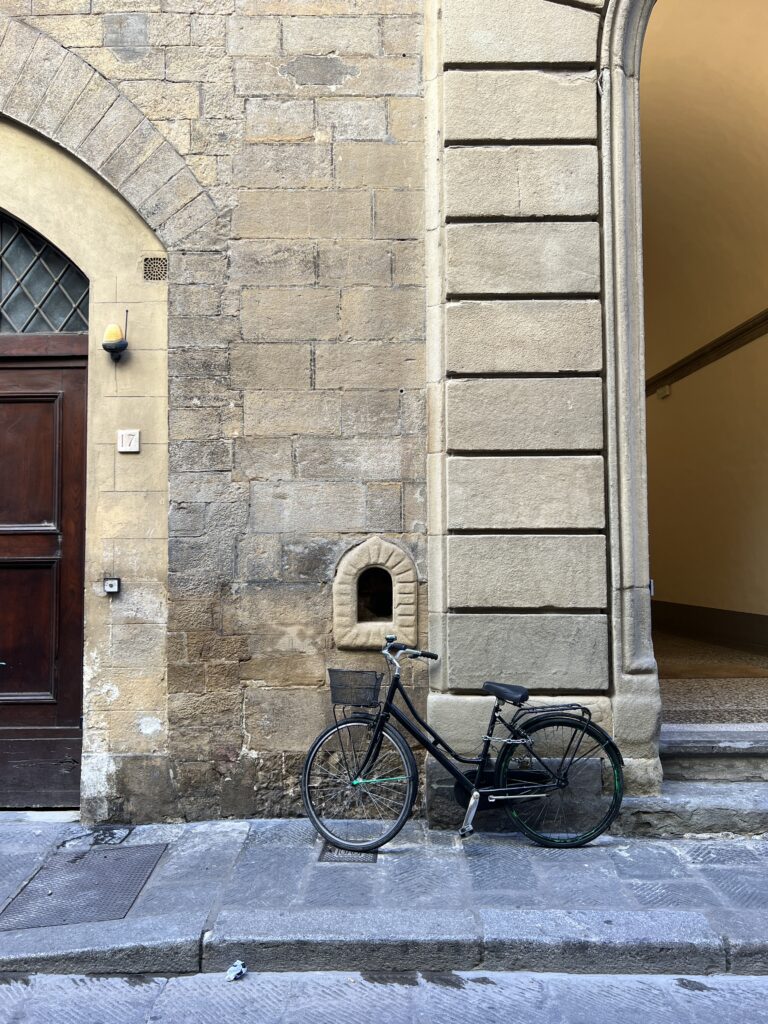
Getting around Florence
One of the beautiful things about Florence is that the tourist area is entirely walkable. It’s quite a small city, so there really is no need for a car, or even to worry about transit when in Florence. As long as, of course, you are staying centrally. There is however a public transit system that includes buses, and trams. A single ride costs € 1.50 or you can buy an “Agile 10 Card” which is € 14 which can be shared amongst your group and is loaded with ten 90-minute journeys. You can learn more about the transit system here. However, I find it easiest, in any country, to utilize the transit feature on Google Maps to easily navigate where you’re going.
Alternatively, there are obviously taxis. Florence is actually one of the most expensive spots in Europe to taxi. Your easiest bet for hailing a taxi is to walk to one of the designated taxi stands located in most major squares and tourist spots.
Another fun way to get around is via an electric scooter (through Bird). However, it’s important to recognize Florence has very narrow streets, and cobblestone roads in most of the city centre, so these can be very challenging to navigate as a tourist. Be respectful and mindful of bikes, and cars on the road, as well as pedestrians!
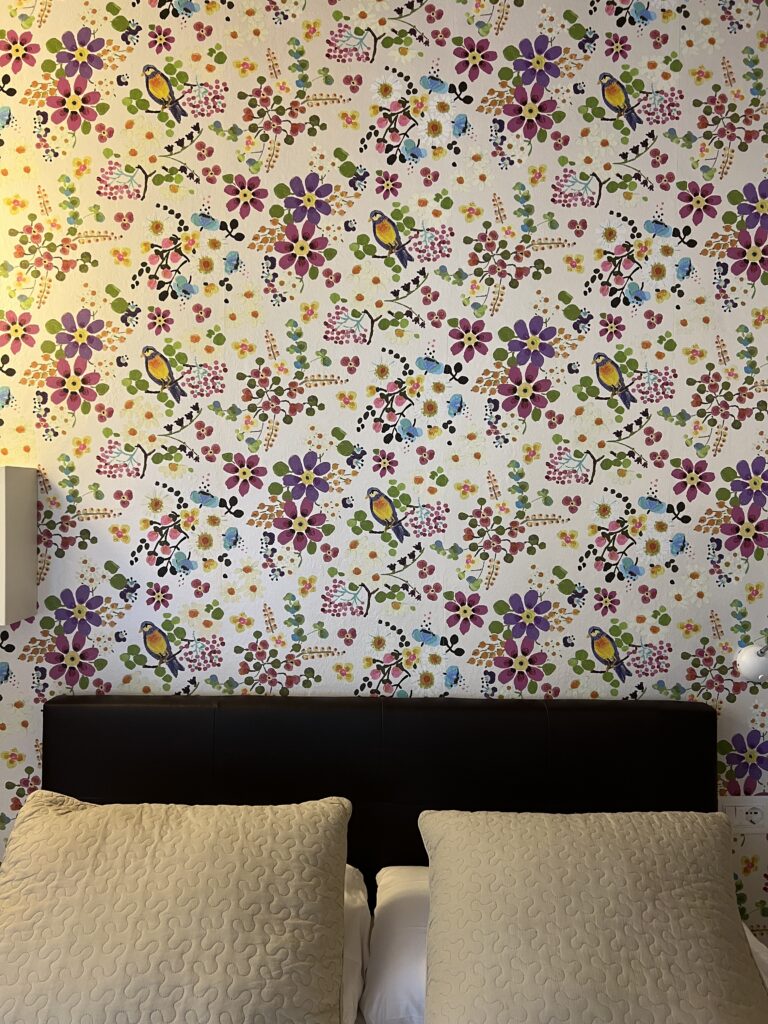
Where to stay
Like any city, there are several neighbourhoods/districts that you can stay in. The good news about Florence is that it’s compact, so no matter what district you’re in, the city centre will be walkable. Here is some guidance to help you choose the area:
City Centre: The medieval and renaissance heart of Florence. This is where you’ll find the famous Duomo and the River Arno with Ponte Vecchio in the south. It is the tourist mecca. Narrow, crowded streets during high season, and an overflowing amount of museums, churches, high-end shopping, restaurants, etc.
Santissima Annunziata: Northeast of the city centre, this is one of the most visited areas of Florence as it’s home to Michelangelo’s David in the Galleria dell’Accademia. It also has a gorgeous square (Piazza Della SS Annunziata). This neighbourhood is near all the important sites but is a bit quieter than the city centre.
Of course, there are several other districts but these are the most central, popular ones. If you are looking for something unique and different, I recommend reading this guide that breaks down each district. Again, it’s hard to go wrong in Florence as it’s so darn walkable!
Accommodations: In terms of accommodations themselves, you’ll find a mix of luxury hotels in Florence like Portrait Firenze, and the Four Seasons. However, there are a lot of budget-friendly accommodations as well such as boutique hotels, inns, and Airbnb. We stayed at Hotel Bencidormi which was right near the central train station and absolutely adorable. Simple, small rooms, but clean, helpful staff, and in a great area.
If you are looking for an Airbnb, here are some great ones I found but weren’t available during our stay:
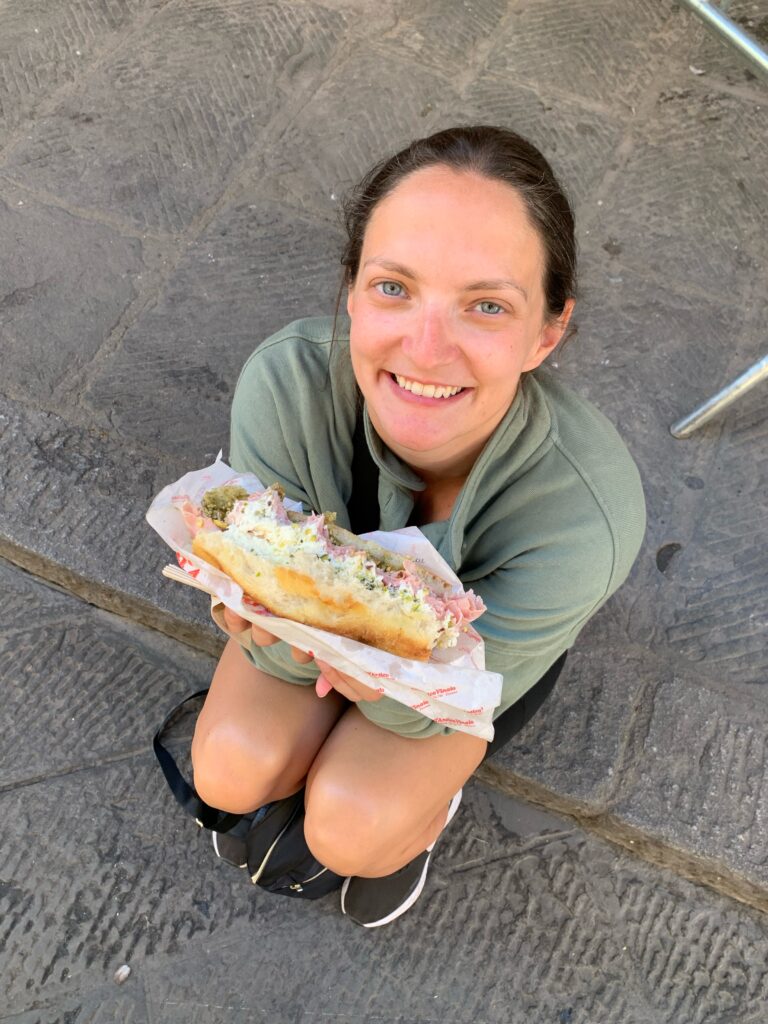
Best places to eat in Florence
Like many of the major tourist spots in Italy, there is absolutely no shortage of places to eat in Florence that are delicious. I could recommend a million, but here is a list that combines all the recommendations I got, and where we went on our recent trip:
Where to eat gelato:
- Gelateria La Sorbettiera
- Vivoli Gelato (oldest gelato shop in Florence)
Tip: Do not go to the gelato spots with towering containers of gelato. If you want the real stuff, look for ones that are covered or not stacked up like the leaning tower of Pisa. If you want to know they don’t use artificial ingredients, look at the colour of the pistachio flavor – it shouldn’t be bright green!
Where to eat paninis:
- Pino’s Sandwiches
- Da’Vinattieri
- Panini Toscani
- All’Antico Vinaio (hands down AMAZING I still think about the mortadella and pistachio sandwich)
- I Fratellini
Where to eat pizza:
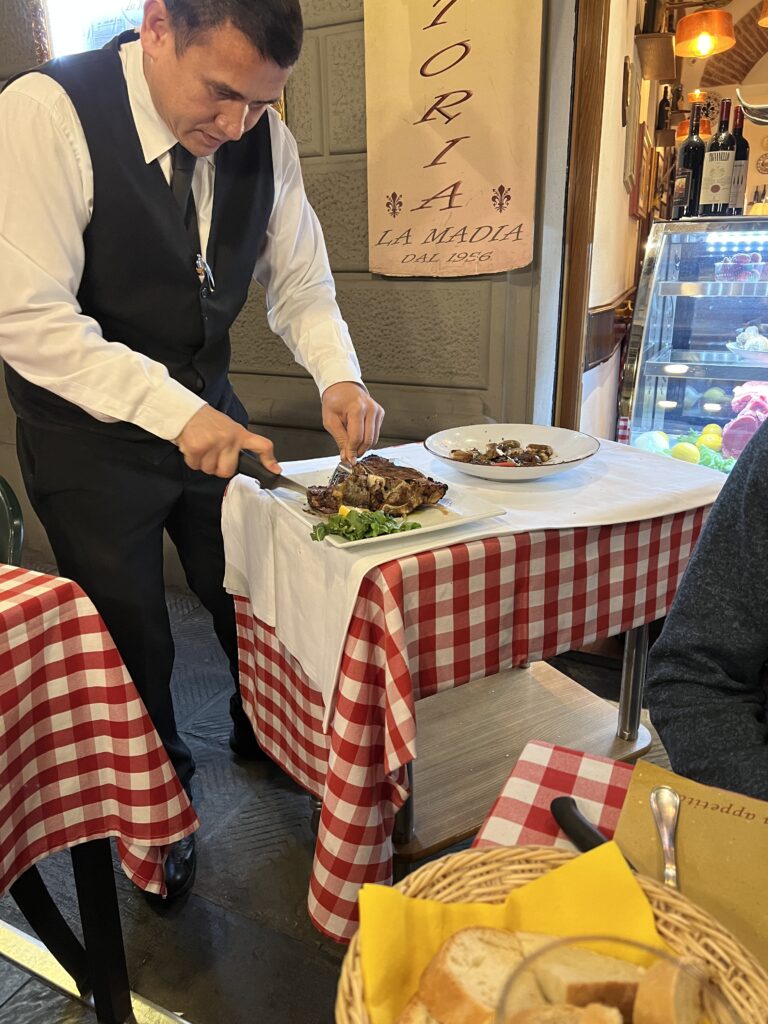
Where to eat traditional Tuscan food:
- Osteria Del Cinghiale Bianco
- Trattoria La Madia (we ate here and had their Florentine steak – SO good)
- Trattoria San Lorenzo
- Trattoria ZaZa
- Trattoria 13 Gobbi
Where to drink in Florence:
- Manifattura (the first bar in Europe to sell drinks made with only Italian liquors)
- Note Di Vino
- Angel Roof Bar (rooftop views)
- Wine Windows (active one at Fishmood, Osteria Bella Donne, and Babae)

What to do in Florence
Museums & Galleries:
Accademia Gallery: A small art museum that is most famous for being home to Michelangelo’s David. To avoid the line during tourist season, buy your tickets online in advance.
Uffizi Palace & Gallery: Florence’s premier art gallery, Uffizi houses one of the greatest collections of Italian Renaissance artwork on earth.
Bargello Museum: A former barracks and prison, turned art gallery. Full of Renaissance artwork and sculptures.
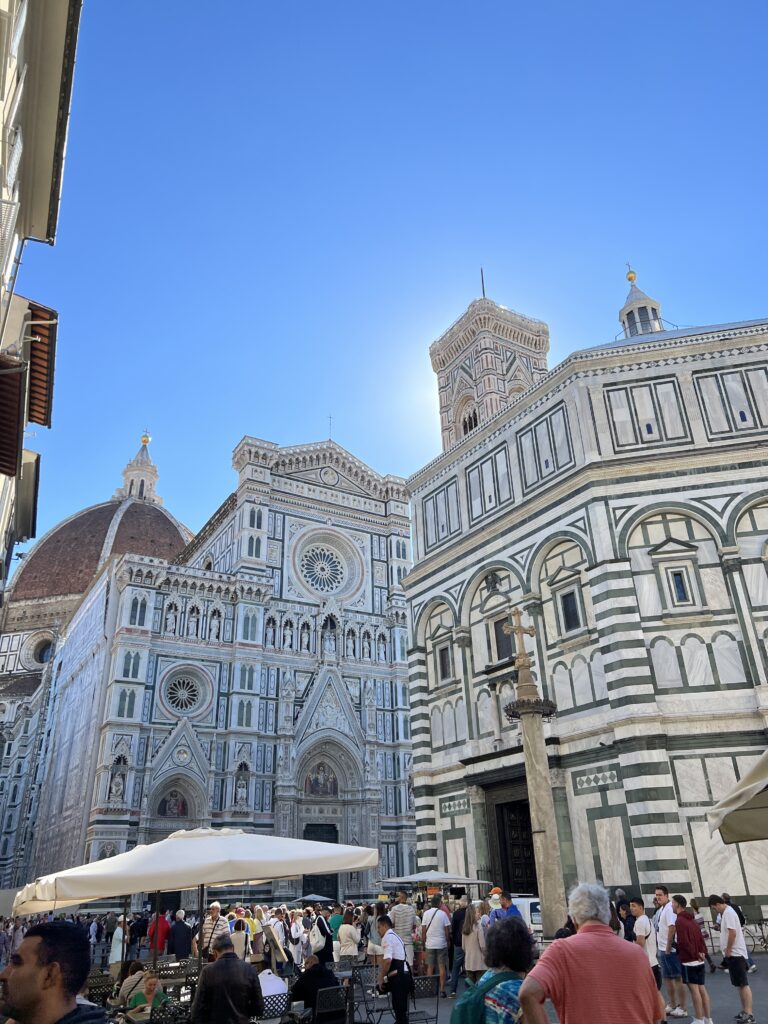
Landmarks & Architecture:
Duomo: If there is one thing you can’t miss as you walk the cobblestone streets of Florence it’s the gorgeous Duomo. Built-in the 1400s, this landmark is just as enchanting to see on the outside as it is on the inside. If you are looking for an adventure, you can climb to the top of Brunelleschi’s dome in 463 steps which take about 45-60 minutes for a great view of the city.
Giotto’s Campanile: A free-standing campanile that is part of the complex of buildings that make up Florence Cathedral on the Piazza del Duomo. You can also climb the 400+ steps to the top of here too for great views!
Palazzo Vecchio: The town hall of Florence, Palazzo Vecchio overlooks Piazza della Signoria, which holds a copy of Michelangelo’s David statue. It offers Roman ruins, a Medieval fortress, and amazing Renaissance chambers and paintings.
Ponte Vecchio: A medieval stone-closed arch bridge over the Arno River. It’s the only bridge in Florence that didn’t get destroyed in the Second World War. What’s notable about this bridge is the shops built along it. This can be a popular spot to purchase gold in Florence.
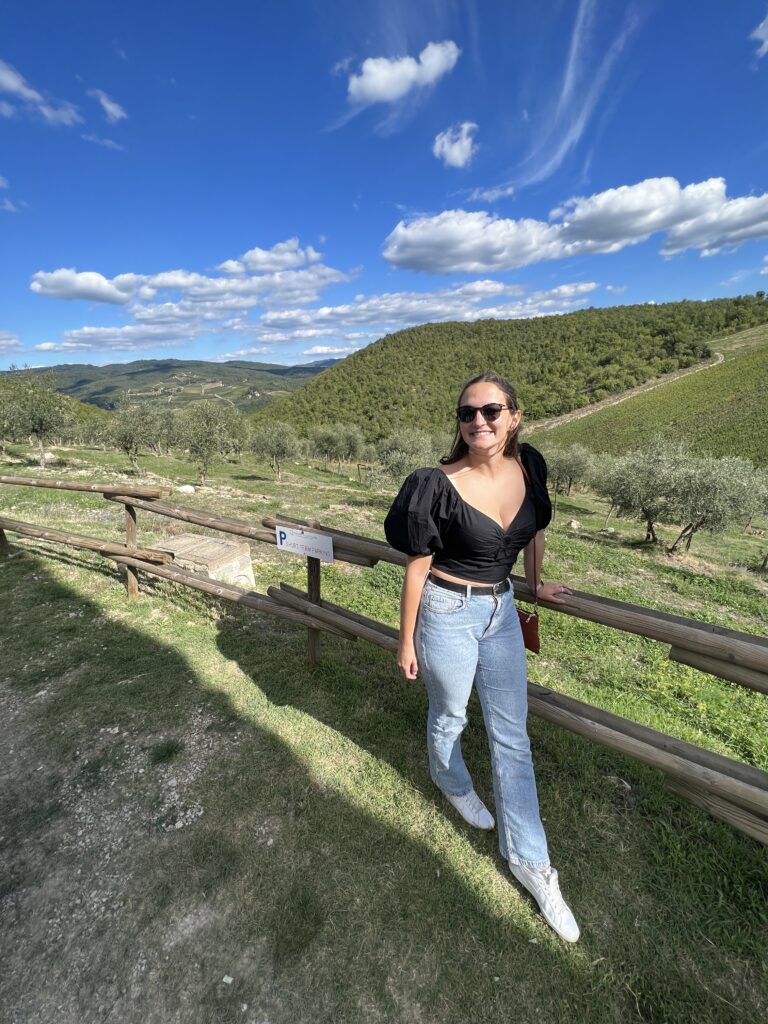
Day Trips:
Wine Region: Just a short drive out of the city of Florence, you’ll enter the famous Tuscan wine country. Rent a car to do your own touring around areas like Chianti, and Siena, or join a tour like I did if you don’t want to be the designated driver.
Pisa: Hop on the train and be in Pisa in just 50 minutes, or rent a car to get yourself there in just an hour. Of course we all know what Pisa is famous for – the leaning tower!
Bologna: Only 1.5 hour’s drive or 35 minutes on a high-speed train, a day trip to Bologna is also an option. Considered the gastronomic capital of Italy, Bologna makes a great day trip for any foodie.
Food:
Florentine Steak (Bistecca alla Fiorentina): Made of young steer or heifer, combined with a specific preparation, this makes this steak one of the most popular dishes of Tuscan cuisine. It’s a high cut, including the bone, and it’s cooked on the embers or on the grill with a degree of “blood” cooking. Honestly SO good, unless of course, you like your steak cooked well done!
Wine: Florence is in the Tuscany region which means it is home to some fabulous wines. You’ll find a ton of wine shops around the city and most offer wine tastings. We stopped at Flli Zanobini but there are a lot to choose from, or even grab a bottle to enjoy in a local park or in your room.
Mercato Centrale: This two-floor market is full of food vendors from butchers to pasta shops. Even if you don’t plan on cooking, you can grab some food to go or eat at one of their many tables upstairs. There are even a few bars you can sit at to have a drink. Open 7 am-2 pm daily.
Gardens:
Boblio Garden: Historical park that opened to the public in 1766. Consider this an outdoor museum as you take in the lush gardens.
Bardini Garden: Italian Renaissance garden of the Villa Bardini offers amazing views of the city of Florence. One of Florence’s best-kept secrets.
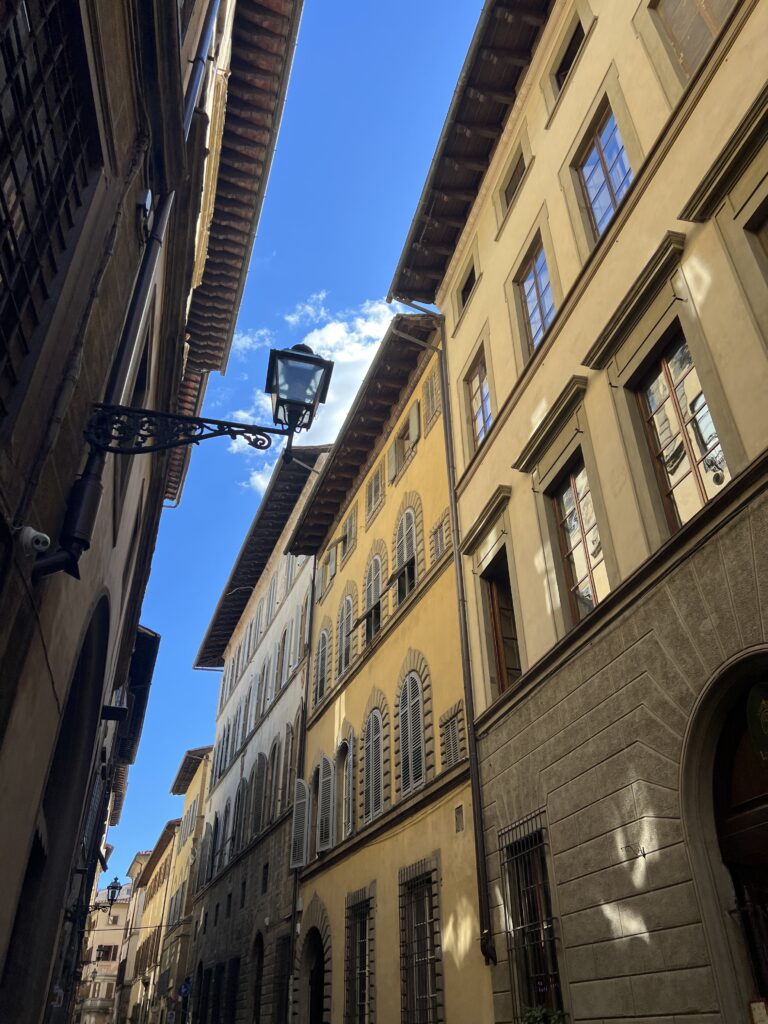
FAQ
How much time do I need in Florence, Italy? I would say a minimum of two days. However, you can obviously spend way more time here, or even one day if you absolutely have to. It’s also dependent on if you plan to do any day trips, and/or how into museums you are since Florence is a centre for so many museums and galleries.
What is the weather like in Florence? May to September is the warmest month in the city. However, this is also the busiest time to go. Florence is great all year round but if you want to try and beat the busiest time of year, opt for shoulder season (early spring, late fall).
How should I dress in Florence? Comfortable! People think they need to dress like Europeans on vacation but wear whatever is suitable for you. Unless you go to a fancy restaurant to eat, comfy, breathable clothes are the most practical. Wear suitable shoes as well since the roads are all cobblestone!
How do I get from the Florence airport to downtown? There is a shuttle tram that runs from the airport to the centre of the city. The T2 runs from the airport to Unita stop close to the central station downtown. It runs every 5-10 minutes and costs € 1.50. You can also take a bus from Volainbus to the centre. It runs every 30 minutes to near Santa Maria Novella station (central station downtown). The ride is about 20 minutes and the price is € 6. You can also take a taxi for a flat rate of € 22-€ 25 (depending on the time of day). Plus you’ll pay extra for each piece of luggage.
Should I go to Florence or Venice? If you ask anyone who has been to both, everyone’s answer is probably different. I’ve been to Venice once but Florence three times. I think both are really cool cities, however, Florence is the hub for the rest of Tuscany and wine tours which is why I’ve been attracted to go back again, and again.
Does everyone speak English in Florence? For the most part, yes. You’ll find that most people within tourist spots speak English. However, I always recommend downloading the Italian language in the Google Translate app ahead of time. They have some great features to not only translate what you are trying to say but also take a picture of an Italian menu and it’ll translate it into English for you.

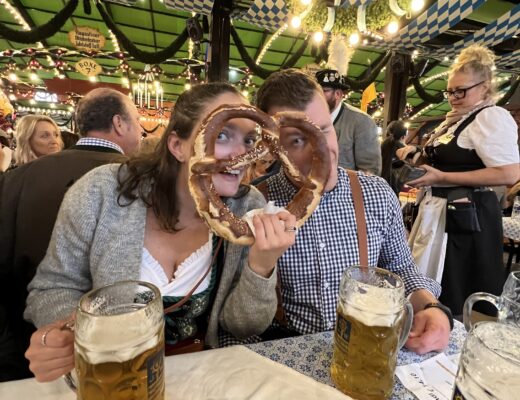
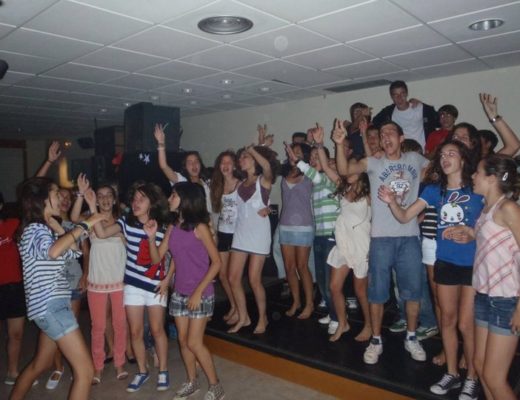
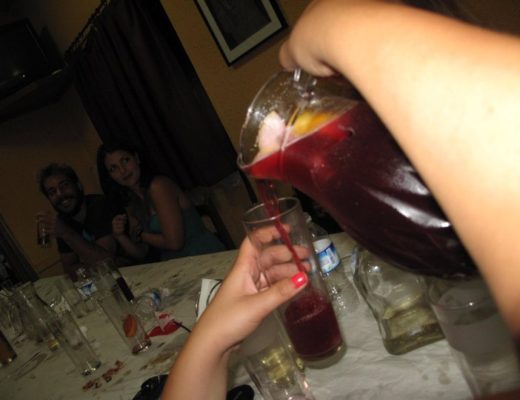

No Comments